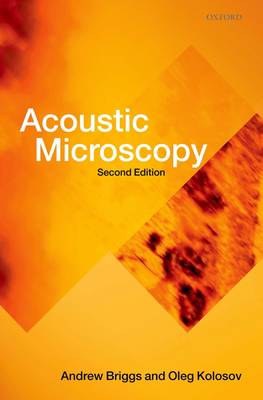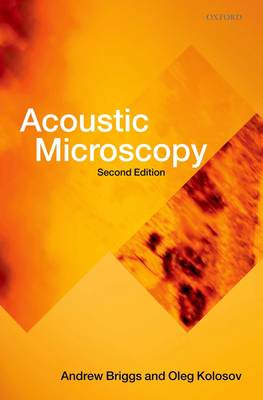
Door een staking bij bpost kan je online bestelling op dit moment iets langer onderweg zijn dan voorzien. Dringend iets nodig? Onze winkels ontvangen jou met open armen!
- Afhalen na 1 uur in een winkel met voorraad
- Gratis thuislevering in België vanaf € 30
- Ruim aanbod met 7 miljoen producten
Door een staking bij bpost kan je online bestelling op dit moment iets langer onderweg zijn dan voorzien. Dringend iets nodig? Onze winkels ontvangen jou met open armen!
- Afhalen na 1 uur in een winkel met voorraad
- Gratis thuislevering in België vanaf € 30
- Ruim aanbod met 7 miljoen producten
Zoeken
Omschrijving
Acoustic microscopy enables you to image and measure the elastic properties of materials with the resolution of a good microscope. By using frequencies in microwave regime, it is possible to make the acoustic wavelength comparable with the wavelength of light, and hence to achieve a resolution comparable with an optical microscope. Solids can support both longitudinal and transverse acoustic waves. At surfaces a unique combination of the two known as Raleigh waves can propagate, and in many circumstances these dominate the contrast in acoustic microscopy. Following the invention of scanning probe microscopes, it is now possible to use an atomic force microscope to detect the acoustic vibration of a surface with resolution in the nanometre range, thus beating the diffraction limit by operating in the extreme near-field. This 2nd edition of Acoustic Microscopy has a major new chapter on the technique and applications of acoustically excited probe microscopy.
Specificaties
Betrokkenen
- Auteur(s):
- Uitgeverij:
Inhoud
- Aantal bladzijden:
- 384
- Taal:
- Engels
- Reeks:
- Reeksnummer:
- nr. 67
Eigenschappen
- Productcode (EAN):
- 9780199232734
- Verschijningsdatum:
- 16/11/2009
- Uitvoering:
- Hardcover
- Formaat:
- Genaaid
- Afmetingen:
- 236 mm x 152 mm
- Gewicht:
- 776 g

Alleen bij Standaard Boekhandel
+ 374 punten op je klantenkaart van Standaard Boekhandel
Beoordelingen
We publiceren alleen reviews die voldoen aan de voorwaarden voor reviews. Bekijk onze voorwaarden voor reviews.











